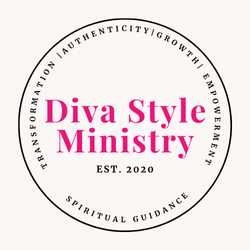 Bold Insights for an Authentic Life
Bold Insights for an Authentic Life
At SoulScript, we support women 35+ in breaking through self-doubt and stepping boldly into lives rooted in confidence, courage, and spiritual wholeness. Each blog post offers guidance, reflection, and powerful tools to help you align with your deepest values and live with unapologetic authenticity.
If you If you think mantras are only for meditation classes or spiritual gurus, think again! While traditional mantras hold great power, creating a personal mantra can be a game-changer in your meditation practice. Personal mantras are deeply personal phrases that align with your specific needs, goals, and intentions. They are powerful tools to center your thoughts, calm your mind, and cultivate positive energy.
A personal mantra doesn’t have to be complicated. In fact, the simpler, the better. The best mantras are concise yet impactful—short phrases that are easy to repeat and evoke a sense of peace, strength, or focus. But how do you create a personal mantra that resonates with you? Let’s dive in.
What Makes a Good Personal Mantra?
A good mantra should be concise, impactful, and tailored to your intentions. Here’s a quick checklist to consider when creating or selecting a personal mantra:
- Impact: Does the mantra speak to your personal goals or values?
- Calmness: Does it inspire a sense of calm, clarity, or focus?
- Simplicity: Is it easy to remember and repeat without disrupting your flow?
- Positive Energy: Does it bring positive energy or encouragement when you say it?
A powerful mantra can be a single word like “Peace,” “Breathe,” or “Strength,” or a short phrase like “I am enough,” “Let go,” or “I choose calm.” The key is to choose words that feel deeply personal and evoke the emotions or mindset you want to cultivate.
Choosing Your Mantra Based on Your Needs
Mantras can be adapted to align with specific emotions or goals. Here are some examples:
- For Anxiety: “Calm and steady,” “I release fear,” “I am grounded.”
- For Anger: “I choose peace,” “Let go,” “Forgiveness flows.”
- For Confidence: “I am powerful,” “I trust myself,” “I am capable.”
Your mantra can evolve based on your current emotional state or intention. For instance, if you’re feeling anxious, you might choose a calming mantra. If you’re feeling overwhelmed, a mantra that fosters focus and clarity can be helpful.
How to Create a Personal Mantra
If you’re ready to create a personal mantra, follow these steps to simplify and refine your thoughts:
- Write It Out: Start by writing a few sentences that express what you need or how you want to feel. Don’t worry if it’s lengthy—you can refine it later.
- Identify Keywords: Review what you wrote and circle the most impactful words or phrases. Focus on words that evoke strong feelings or align with your goals.
- Group Related Words: Organize similar words into clusters. This can help you see patterns and narrow down your focus.
- Select Power Words: Choose one or two words from each group that embody the essence of your message.
- Craft Your Mantra: Combine your selected words into a short, impactful statement. Aim for five words or fewer to keep it concise and easy to remember.
For example, if your draft includes the words “calm, steady, release, breathe,” you could create the mantra “I release and breathe calmly.” Or you might choose a single word like “Breathe.”
What If Your Mantra Feels Too Long?
Mantras are meant to ground you, not distract you. If your mantra feels too long or complex, consider these steps:
- Trim It Down: Identify the core words that carry the most meaning and cut the rest.
- Focus on Feeling: Select words that evoke a strong, immediate feeling.
- Choose One Word: Sometimes, one powerful word can have the same impact as a longer phrase.
For instance, if your initial mantra is “I am a calm, strong, resilient, and focused person,” you might reduce it to “Calm and strong” or simply “Resilient.”
Why Mantras Matter
Your personal mantra becomes a bridge between your conscious mind and deeper intentions. It grounds you in the present, helps you focus, and reminds you of your inner strength. Whether you use it during meditation, in moments of stress, or as a morning affirmation, your mantra is a simple but powerful tool for self-empowerment.
Using Mantras in Daily Life
Incorporating mantras into your daily routine can be transformative. Consider using your personal mantra:
- Upon Waking Up: Repeat your mantra before getting out of bed to set a positive tone for the day.
- During Stressful Moments: Use your mantra to center yourself during challenging situations.
- Before Bedtime: Repeat your mantra to release the day’s tension and prepare for rest.
Creating a Mantra Ritual
To deepen your practice, consider creating a mantra ritual. Light a candle, close your eyes, and repeat your mantra for 3-5 minutes. Focus on each word, allowing its meaning to resonate. This simple yet profound ritual can become a daily anchor, helping you cultivate inner calm and clarity.
Related Reads:
Elevate Your Mindset & Confidence
Keep going! These insightful reads will help deepen self-awareness, build confidence,
and inspire you as you progress toward your best, most authentic self.





